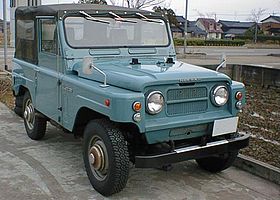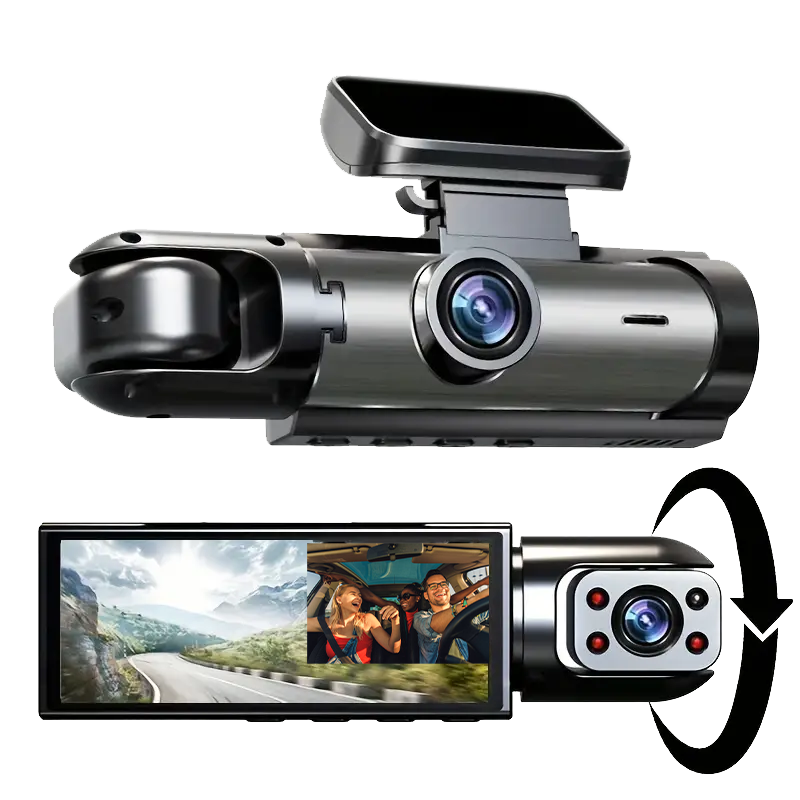
Nissan Patrol Second Generation 1959- 1980

| Second generation (60) | |
|---|---|
 |
|
| Overview | |
| Also called | Datsun Patrol (Philippines) Jonga P60 (India) Nissan Patrol |
| Production | 1959–1980 |
| Assembly | Japan: Hiratsuka; Yokohama; Zama (1965–1980) India: Jabalpur (1965–1999) South Africa: Rosslyn (1959–1983) |
| Body and chassis | |
| Class | Mid-size off road vehicle |
| Body style | 3-door hardtop 3-door softtop 5-door wagon/van 2-door pickup fire truck |
| Layout | Front-engine, four-wheel drive |
| Powertrain | |
| Engine | 4.0 L P I6 (petrol) |
| Transmission | 3/4-speed manual |
The soft-top Nissan Patrol 60 (two-door; 2,200 mm (86.6 in) wheelbase) and G60 (two-door; 2,500 mm (98.4 in) wheelbase) were first sold in Australia in 1960. Left-hand drive L60/GL60 models were sold outside of Australia.
US customers could only get Patrols from 1962 until 1969. Patrols were sold through Datsun dealerships, making it at the time the only Nissan-badged vehicles sold in the United States until the early 1980s when the Datsun marque was being phased out. An extra long wheelbase version, the H60, was also available.
The 4WD Nissan Patrol 60 series was produced in short, medium and long wheel-base versions. It had a manual transmission type-F3B83L at first with three and later with four speeds, two-speed transfer case with part-time four-wheel drive. The motor was the P engine, a 3,956 cc (241.4 cu in) inline overhead-valve six-cylinder, featuring bathtub-shaped combustion chambers and a fully balanced seven-bearing crank shaft. With two doors in front and one at the back and four seats (driver, and companion in front, two parallel back seats), the extra long wheelbase version (the H60) was available with eight-passenger capacity.
In 1963, the KG60 (and KGL60) hard-top models were introduced.
Nissan Australia claim that the 60 series Patrol was the first vehicle to drive across the Simpson Desert in Australia, and built much publicity around the 50-year anniversary of the event, including a re-enactment with a similar vehicle ending on 21 July 2012 to publicise the impending release of their new generation Y62. However, this version of events differs from the recollections of Griselda Sprigg, the wife of Reg Sprigg, who accompanied him on the trip. In her 2001 book about the event, she describes how Reg in the Nissan was held up on the last day. Griselda and the children went on to Birdsville in a Toyota Land Cruiser which was one of three support vehicles. Reg arrived the next day in the Patrol, making it the second vehicle to cross the Simpson Desert. In Being First is Forever (2012), Marge Sprigg (with Doug Sprigg present) asserts that only the Nissan Patrol G60 did the west-east crossing of the Simpson Desert. Doug and Marge undertook the crossing with their parents as young children. She claimed that the other vehicles did not cross west-east, they used another route. This contradicts the account of Griselda who described how the support vehicles, including the Toyota made the crossing together.
| Series | Body styles | Engines (gasoline) |
|---|---|---|
| 60 series | 60:SWB: soft top, K60 hard top G60:LWB: WG60 station wagon, G60H-A cab/chassis, 62ZG60H pickup truck H60:Super LWB: VH60 van, FH60 fire truck |
P engine |
Jonga
In the 1960s, the Indian Army showed an interest in two vehicles from the Nissan stable, they were the Nissan Patrol P60 and the Nissan 4W73. The first production units were completed at Vehicle Factory Jabalpur (VFJ) around 1969. The name as per the Indian army records is Jonga, which is an acronym for Jabalpur Ordinance aNd Guncarriage Assembly. It was built at the newly commissioned Vehicle Factory Jabalpur alongside the Nissan 4W73. The first production units were completed at Vehicle Factory Jabalpur (VFJ) around 1969. VFJ was sanctioned in 1965 for the production of three non-fighting vehicles for the Indian military: the 3-ton Shaktiman truck from MAN (Germany), the 4W73 (1-ton Carrier) and quarter-ton Nissan Patrol.
Interestingly, both the vehicles from Nissan stable were fitted with the same engines and lots of parts in common.
The Jonga was also briefly sold to civilian customers with a 4.0-litre Hino diesel engine in 1996, but the demand was low, mostly due to uncompetitive price, as well as its unappealing looks. Less than two hundred units were sold in all.
It served faithfully until the late 1990s, when it was replaced by the lighter Mahindra & Mahindra MM550 jeeps. Many army auctioned pieces have also been scrapped by their subsequent civilian owners, or stretched and converted to people carriers in rural areas.
